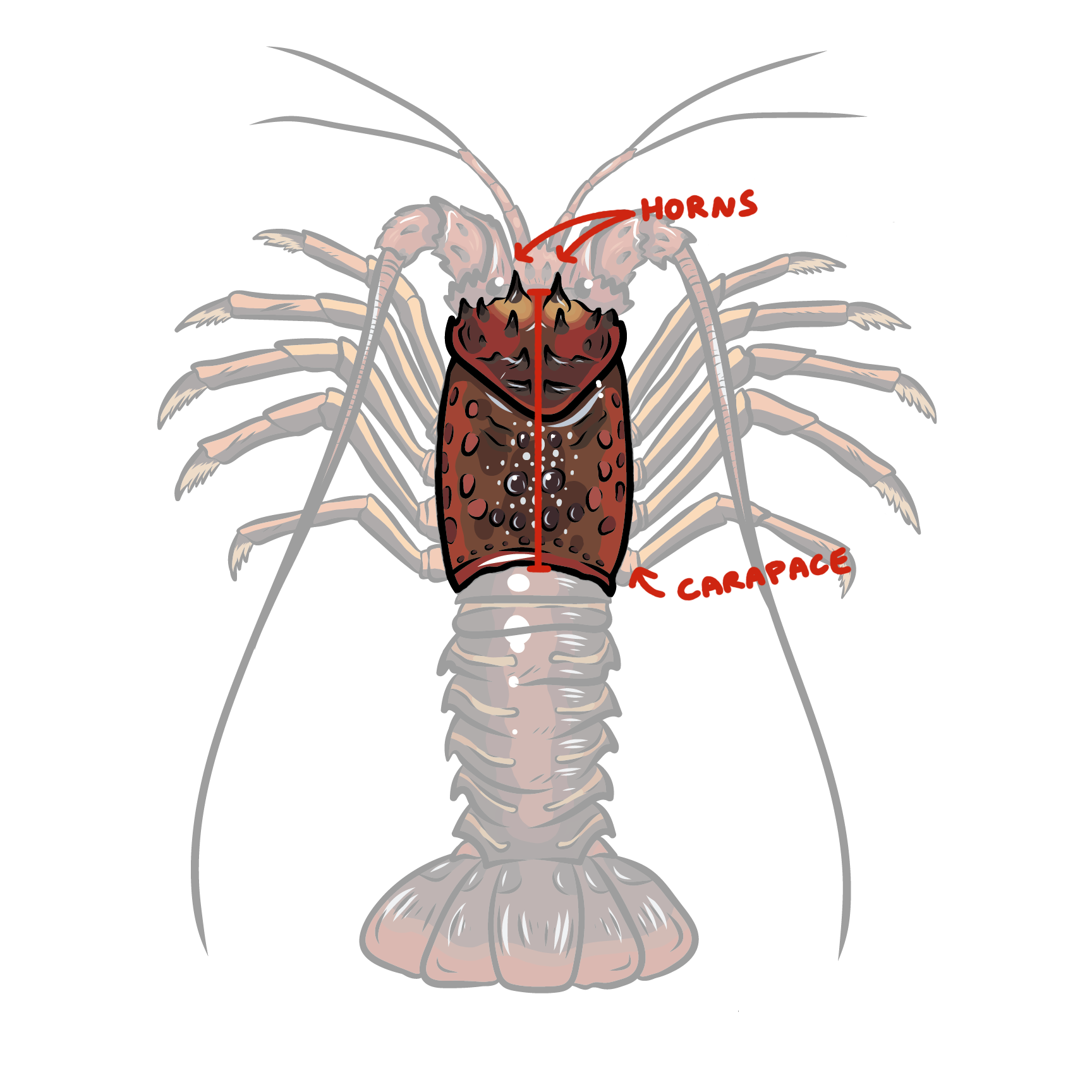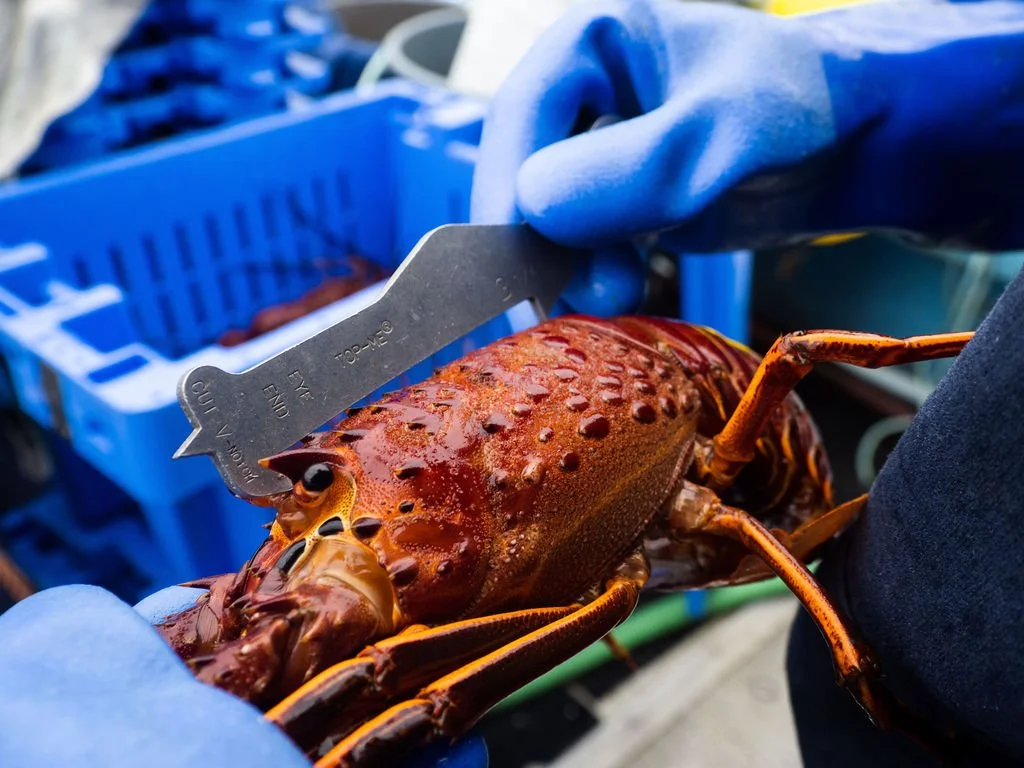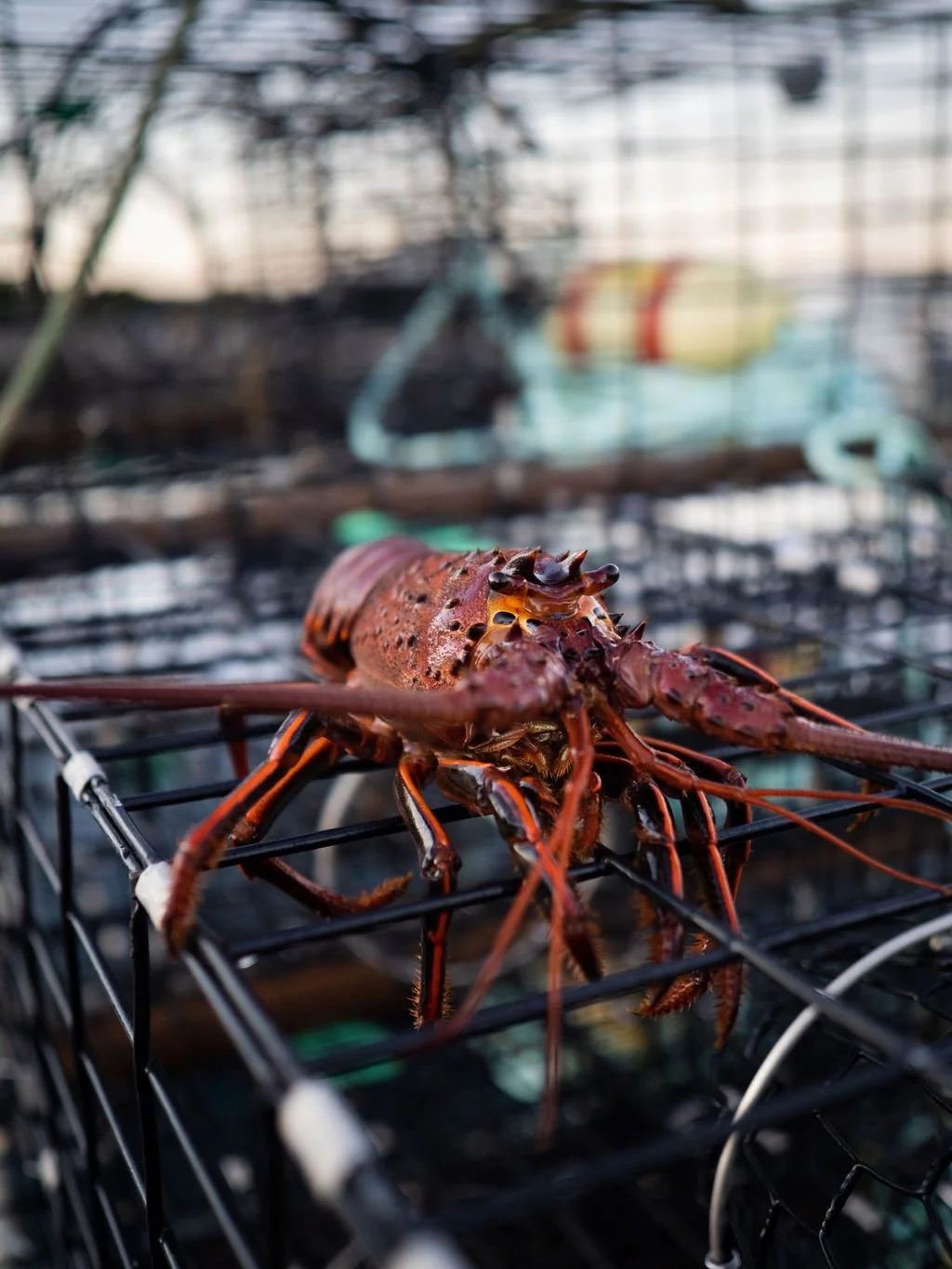Diving Into Spiny Lobster Season
This is a California spiny lobster. Notice the lack of claws - unlike clawed Maine lobsters, which live in the cold waters of the northwestern Atlantic Ocean, our local lobster occupy coastal habitats stretching from Santa Barbara to Baja California, Mexico. Photo taken by Oriana Poindexter.
The air is crisp, the leaves are changing, and pumpkins have materialized on doorsteps far and wide. In San Diego, along with the usual fall favorites like squash, sweet potatoes, and apples, there's another seasonal treat you might not expect:
California spiny lobsters.
Spiny lobster season begins each year in early October and runs through mid-March. During the spring and summer, the fishery is closed - a fisheries management strategy designed to protect the species during its sensitive spawning period. This closure is a sustainability measure to ensure that breeding lobsters are safe from harvest and able to pass on their genes for the next generation of little lobsters.
Along with complying with the seasonal closure, commercial fishers abide by a minimum legal size limit of 3 ¼ inches carapace length, measured in a straight line along the middle of the back, from the rear edge of the eye socket between the “horns” to the end of the body shell.
At right, an example of a little lobster who's got some growing to do! Spiny lobsters take around 7 to 11 years to reach their legal size limit. Photo by Oriana Poindexter.
A visual aid on how the lobsters are measured. Illustration by Kira Kawano.
Spiny lobster sports fierce thorn-like projections and sharp recurved spines all over its carapace and under the sides of its tail for defense. Photo by Oriana Poindexter.
Any undersized lobsters (referred to as “shorts” or “short lobster,” are returned to their ecosystems to continue their lobster business. Spiny lobsters reach sexual maturity before they reach the minimum legal size, so this exact measurement gives them the chance to reproduce for at least one or two years before they can be legally harvested (FAQs about the fishery). Science and careful oversight is all a part of the strategy to keep the lobster population healthy and to support a sustainable fishery for future seasons.
How Are They Caught?
Measuring gauge in action. Photo by Oriana Poindexter.
Perched atop traps. Photo by Oriana Poindexter.
Throughout the season, commercial fishers catch spiny lobsters in specialized traps with specific design requirements that are a part of sustainable management. Each box-like trap, often built by hand by the fishers themselves, represents a significant investment of time and money. They are made from heavy wire or plastic mesh and feature two points of passage: a one-way entry funnel for lobsters to enter and a smaller escape port for undersized juveniles. While most of the trap’s metal components are made from stainless steel to prevent rusting, the door hinges are intentionally designed to corrode over time, eventually letting the door fall away. This “self-destruct” mechanism allows lobsters to escape if a trap is lost. Once traps are baited and marked with buoys and GPS coordinates, they are dropped into the ocean, ready to help fishers bring fresh lobster to local markets and restaurants. When the trap is recovered, lobsters are individually and carefully handled - held up to a precise measuring gauge and kept in good condition for live sales.
Cooking at Home
For those cooking spiny lobster at home for the first time, you may have questions about how to handle and prepare it properly. One of the most common concerns is how to humanely dispatch a lobster. Even professional chefs have different opinions on the best approach. Some recommend “putting the lobster to sleep” by placing them in the freezer for 30-60 minutes (or 15 which is enough to sedate them but retains the quality of the meat) before boiling. Others prefer the quicker method of swiftly chopping the lobster down the middle, which destroys neural ganglia. Alternatively, you can submerge the lobster in a saltwater ice brine, which stuns and kills the lobster without the risk of freezing the meat. A combination of stunning the lobster via freezer or ice bath before chopping is also an option. While this step can feel daunting, especially for first-timers, just remember that whichever method you choose, you’re taking care to honor the life of the animal.
A classic serving presentation of Spiny Lobster. Dish by Chef Davin Waite. Photo by Oriana Poindexter
After dispatching the lobster, the next step is to remove the intestinal tract. If you halved the lobster before cooking, be sure to extract the dark vein running along the center of the tail—this is the intestinal tract, which can easily be scraped out with the tip of a knife. For whole lobsters with antennae, you can use the backward-facing spines of the antenna to pull the tract out cleanly (insert into the anus and withdraw - yes, it sounds crazy). Now you’ve got a lobster ready to be cooked!
There are plenty of ways to cook up your fresh catch - whether you choose to boil, steam, or bake it. Whatever method you choose, you'll want to get that tasty tail meat out. If you’ve boiled it, just twist off the tail away from the carapace, snip the underside membrane of the tail with kitchen shears, and pull out that delicious lobster meat!
As the season gets underway, you'll see California spiny lobsters making their way to local markets and restaurants that proudly support San Diego’s fishing community. In a city where the year-round pleasant weather can make it easy to miss the changing seasons, the arrival of spiny lobster serves as a delicious reminder that fall has officially arrived.
Celebrate the arrival with a Fishful Future Recipe:
Further Reading
California Spiny Lobster Seafood Profile. 2024. California Sea Grant. https://caseagrant.ucsd.edu/seafood-profiles/california-spiny-lobster
California Spiny Lobster Fishery: MMPA List of Fisheries, 2024. NOAA Fisheries. https://www.fisheries.noaa.gov/national/marine-mammal-protection/california-spiny-lobster-fishery-mmpa-list-fisheries








